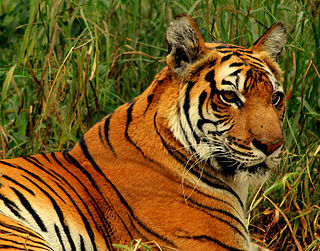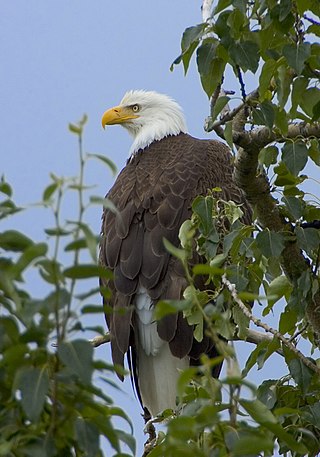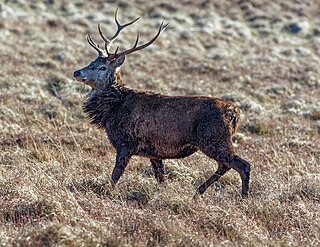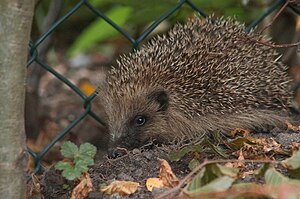
The fauna of Australia consists of a large variety of animals; some 46% of birds, 69% of mammals, 94% of amphibians, and 93% of reptiles that inhabit the continent are endemic to it. This high level of endemism can be attributed to the continent's long geographic isolation, tectonic stability, and the effects of a unique pattern of climate change on the soil and flora over geological time. A unique feature of Australia's fauna is the relative scarcity of native placental mammals. Consequently, the marsupials – a group of mammals that raise their young in a pouch, including the macropods, possums and dasyuromorphs – occupy many of the ecological niches placental animals occupy elsewhere in the world. Australia is home to two of the five known extant species of monotremes and has numerous venomous species, which include the platypus, spiders, scorpions, octopus, jellyfish, molluscs, stonefish, and stingrays. Uniquely, Australia has more venomous than non-venomous species of snakes.

The sika deer, also known as the Northernspotted deer or the Japanese deer, is a species of deer native to much of East Asia and introduced to other parts of the world. Previously found from northern Vietnam in the south to the Russian Far East in the north, it is an uncommon species that has been extirpated in most areas of its native range, except in Japan, where it is overabundant and present in very large numbers.

India is the world's 8th most biodiverse region with a 0.46 BioD score on diversity index, 102,718 species of fauna and 23.39% of the nation's geographical area under forest and tree cover in 2020. India encompasses a wide range of biomes: desert, high mountains, highlands, tropical and temperate forests, swamplands, plains, grasslands, areas surrounding rivers, as well as island archipelago. Officially, three out of the 36 Biodiversity Hotspots in the world are present in India: the Himalayas, the Western Ghats, and the Indo-Burma region. To these may be added the Sundarbans and the Terrai-Duar Savannah grasslands for their unique foliage and animal species. These hotspots have numerous endemic species. Nearly 5% of India's total area is formally classified under protected areas.

The fauna of Canada consist of approximately 200 mammal species, over 460 native bird species, 43 amphibian species, 43 reptile species, and 1,200 fish species. The biology survey of Canada cites that there are approximately 55,000 species of insects, and 11,000 species of mites and spiders.

The fauna of the United States of America is all the animals living in the Continental United States and its surrounding seas and islands, the Hawaiian Archipelago, Alaska in the Arctic, and several island-territories in the Pacific and in the Caribbean. The U.S. has many endemic species found nowhere else on Earth. With most of the North American continent, the U.S. lies in the Nearctic, Neotropic, and Oceanic faunistic realms, and shares a great deal of its flora and fauna with the rest of the American supercontinent.

The fauna of Scotland is generally typical of the northwest European part of the Palearctic realm, although several of the country's larger mammals were hunted to extinction in historic times and human activity has also led to various species of wildlife being introduced. Scotland's diverse temperate environments support 62 species of wild mammals, including a population of wild cats, important numbers of grey and harbour seals and the most northerly colony of bottlenose dolphins in the world.
The wildlife of Japan includes its flora, fauna, and natural habitats. The islands of Japan stretch a long distance from north to south and cover a wide range of climatic zones. This results in a high diversity of wildlife despite Japan's isolation from the mainland of Asia. In the north of the country, north of Blakiston's Line, there are many subarctic species which have colonized Japan from the north. In the south there are south-east Asian species, typical of tropical regions. Between these areas lies the temperate zone which shares many species with China and Korea. Japan also has many endemic species that are found nowhere else in the world, making it home to many endangered/rare species.

The wildlife of Jordan includes its flora and fauna and their natural habitats. Although much of the country is desert, it has several geographic regions, each with a diversity of plants and animals adapted to their own particular habitats. Fossil finds show that in Palaeolithic times, the region had Syrian brown bears, Asiatic lions, zebras, Asian elephants, and rhinoceroses, but these species are all now extinct in this region.

The wildlife of Algeria is composed of its flora and fauna. Mountains, chotts, wetlands, and grassy desert-like regions all support a wide range of wildlife. The most commonly seen animals include the wild boars, jackals, and gazelles, although it is not uncommon to spot fennecs and jerboas. Leopards and cheetahs are seldom seen.

The fauna of Europe is all the animals living in Europe and its surrounding seas and islands. Europe is the western part of the Palearctic realm. Lying within the temperate region, the wildlife is not as rich as in the hottest regions, but is nevertheless diverse due to the variety of habitats and the faunal richness of Eurasia as a whole.

The fauna of Ireland comprises all the animal species inhabiting the island of Ireland and its surrounding waters.

The fauna of Toronto include a variety of different species situated within the city limits. Toronto contains a mosaic of ecosystems that includes forests, rivers, streams, and wetlands, which allows it to support a large variety of fauna. Approximately 87 to 90 per cent of the city's indigenous flora and fauna inhabit the city reside within the Toronto ravine system. The city's ravine system, creeks and rivers are wildlife corridors that allow animals to travel from one area of the city to another. Although most animals in Toronto reside within the ravine system, several animals also live in the city's urban environment and parks.

The fauna of England is similar to that of other areas British Isles and lies within the Palearctic realm. England's fauna is mainly made up of small animals and is notable for having few large mammals, but in similarity with other island nations; many bird species.

Fauna of Wales includes marine and land animals, birds and reptiles that are resident, visitors or have been introduced to Wales.

The fauna of Italy comprises all the animal species inhabiting the territory of the Italian Republic and its surrounding waters. Italy has one of the highest levels of faunal biodiversity in Europe, with over 57,000 species recorded, representing more than a third of all European fauna. This is due to various factors. The Italian peninsula is in the centre of the Mediterranean Sea, forming a corridor between central Europe and North Africa, and it has 8,000 km (5,000 mi) of coastline. Italy also receives species from the Balkans, Eurasia, and the Middle East. Italy's varied geological structure, including the Alps and the Apennines, Central Italian woodlands, and Southern Italian Garigue and Maquis shrubland, also contribute to high climate and habitat diversity.

The biodiversity of Wales is the wide variety of ecosystems, living organisms, and the genetic makeups found in Wales.

The fauna of the State of California may be the most diverse in the United States of America. Of the Lower 48 conterminous states, California has the greatest diversity in climate, terrain and geology in general. The state's six life zones are the lower Sonoran (desert); upper Sonoran ; transition ; and the Canadian, Hudsonian, and Arctic zones, comprising California's highest elevations. California’s diverse geography gives rise to dozens of different ecosystems, each of which has its own unique native plants and animals. California is a huge state, the 3rd largest in the U.S., and can range broadly in habitat type.

The fauna of the United States Virgin Islands consists of 144 species of birds, 22 species of mammals, 302 species of fish and 7 species of amphibians. The wildlife of the U.S.V.I. includes numerous endemic species of tropical birds, fish, and land reptiles as well as sea mammals. The only endemic land mammals are six species of native bats: the greater bulldog bat, Antillean fruit-eating bat, red fruit bat, Brazilian free-tailed bat, velvety free-tailed bat and the Jamaican fruit bat. Some of the nonnative land mammals roaming the islands are the white-tailed deer, small Asian mongoose, goats, feral donkeys, rats, mice, sheep, hogs, dogs and cats.

Montenegro is the smallest Balkan nation in population and second smallest in land mass. The land mass is 13,812 square kilometres with 360 square kilometres of water. Montenegro's geography ranges from mountainous forested regions in the north where larger mammals are most common. Mediterranean coastline makes up the south end of the country, forested area makes up 40.4% of the nation's landmass. The most densely populated area of the country is the south coast and the most sparsely populated is the north east section of the country. The fauna of Montenegro is predominantly shared with surrounding Balkan nations.




















